STEP 5. Day 2. Grain substrate sterilization for mushroom spawn
At this stage, you've already have prepared substrate and jars/bags for substrate with injection port and air filter.
Now we need to make substrate sterilization.
What is sterilization?
Sterilization — heat treatment that deactivates all forms of microorganisms in substrate, such as bacteria and mold spores. It is carried out at temperatures above 212°F (+100°C) for a certain period of time
You can buy ready for inoculation sterile grain for mushroom spawn, so that skip next steps and move on Step 6. Inoculation
Such option can save your time greatly and money for expensive pressure cooker, jars and lids accessories. It's a great option if you just want to try mushroom cultivation with ease.
Shroomok's choice on Amazon:
Sterilized Rye Berry Mushroom Substrate with Self Healing Injection Port - 1/6/12/25 Bags - $16.50
Sterilized Wheat Grain Bag with Injection Port - 3 Lb - 1 Bag - $16.88
Sterilized Rye Grain Berries for Mushroom Spawn | Quart Jars - 1 Jar - $17.99
Sterilized Rye Grain Mushroom Substrate in Injectable Jars - 2 Jars - $29.56
Sterilized Rye Berry Grain Bag with Injection Port - 3 lbs (2 Bags Each 1.5 lb) - $39.74
Sterilized Rye Berries Substrate in Mushroom Grow Bags - 1 Pound - 6 Bags - $46.50
Sterilized Rye Berry Mushroom Substrate in Injectable Quart Jars - 4 Jars - $59.95
BRF Jars Brown Rice Flour Mushroom Substrate - 6 Jars - $58.00
All you need to prepare for grain sterilization
1. Pressure Cooker, Autoclave, Pressure Multicooker or Instant Pot
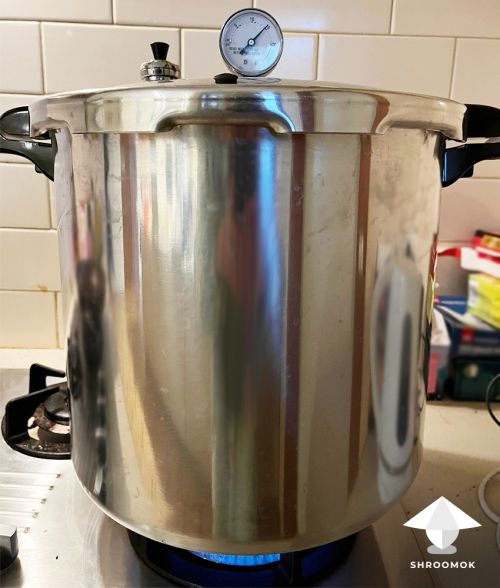
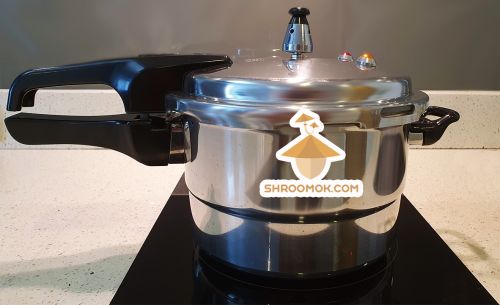
Shroomok's Choice on Amazon:
T-fal Pressure Cooker, 3 PSI Settings - 22 Qt $93.95 - Budget PC
Presto Pressure Cooker - 23 Qt $124.99 - Best Seller!
All-American Pressure Cooker - 21/25/30/40 Qt - $419.29
2. Prepared grain substrate (wheat, aots, milo, rye, barley, corn, brown rice, BRF substrate etc.)
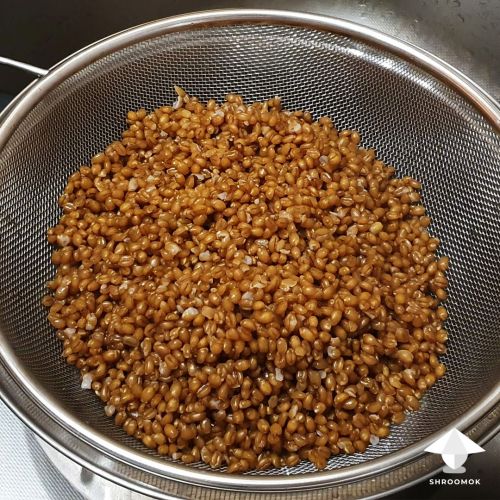
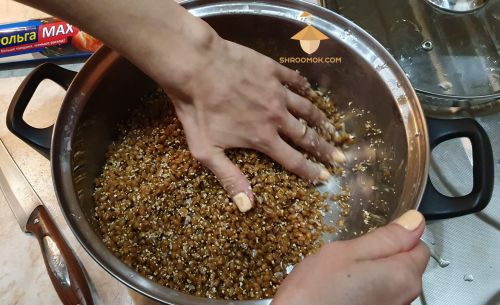
🔴 Check out: Step 2. Choose right substrate for magic mushroom growing
🔴 Check out: Step 3. How to prepare grain substrate for mushroom growing
3. Prepared Spawn Jars or Spawn Bags with inoculation port and air filter
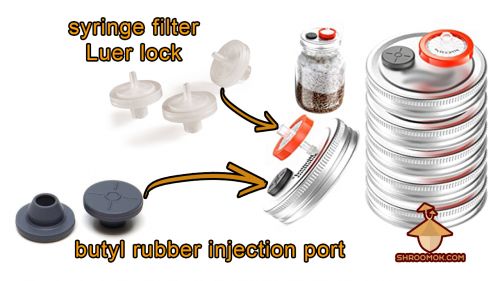
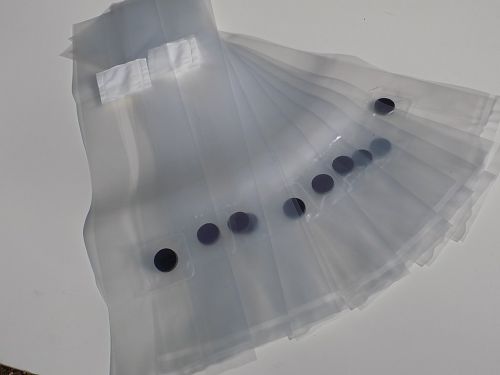
🔴 Check out: Step 4. Jars and Bags for grain substate
4. Optional! Vermiculite or Vermiculite/Perlite 50/50
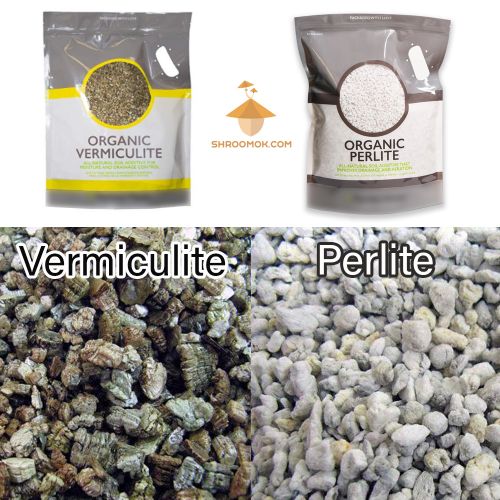
Shroomok's Choice on Amazon:
Vermiculite 8 qt., 1/2/5 Pack - $14.60
Organic Vermiculite 8 qt. - $15.39
Premium Perlite 8 qt. - $13.95
Organic Perlite 8 qt. - $16.99
5. Aluminium Foil.
6. Water.
Preparation before grain substrate sterilization
1. Optional! Recommended for wheat berry and brown rice. Add 1 tablespoon of vermiculite on the bottom of each jar (just to cover the bottom). In case there will too much moisture in the substrate, this vermiculite will help to compensate. It will absorb the excess moisture.
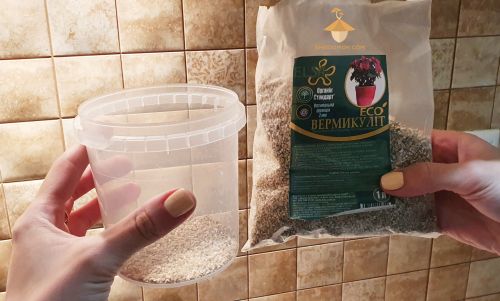
2. Fill the jars with the prepared grain substrate, no more than 2/3 or 3/4 of the jar. In the future you'll need to shake the content of the jars without opening them. If you fill the jar to the top, you won't be able to shake the substrate. Additional space needed for gas exchange as well
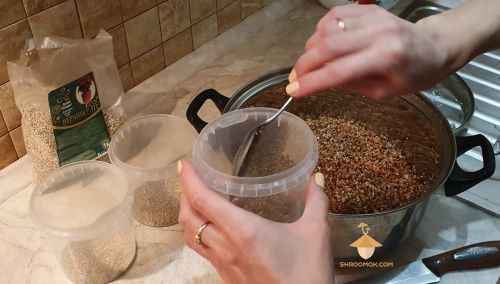
3. Close the jars tightly with modified lid (lid with inoculation port and filter). During sterilization lids on the jars may loosen under the influence of temperature. This applies to both metal and polypropylene lids. Make sure they are tightly closed before sterilization
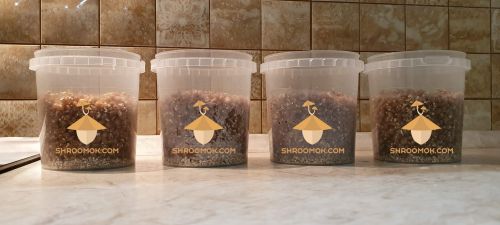
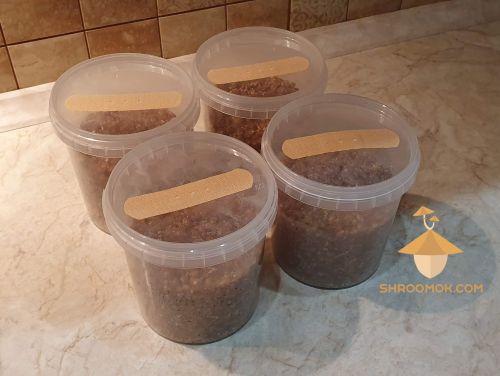
4. Wrap the lids of the jars with foil. So that water will not seep through the air filter on the lid during sterilization
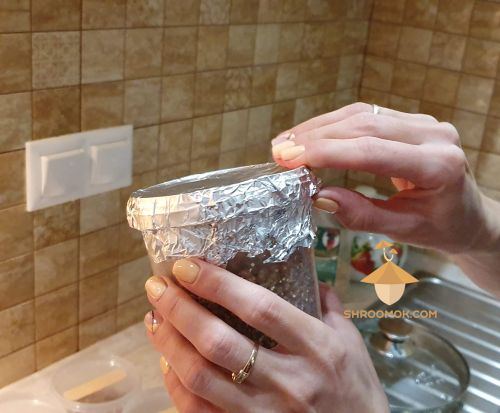
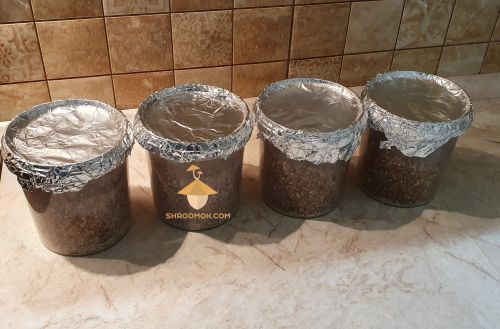
Grain substrate sterilization in multicooker, pressure cooker, autoclave
1. On the bottom of the pressure cooker (or multicooker) put a metal stand or cloth napkin. The jars and the bottom should not touch each other and less banging in the multicooker. This more concerned to glass jars, so that they do not break during sterilization
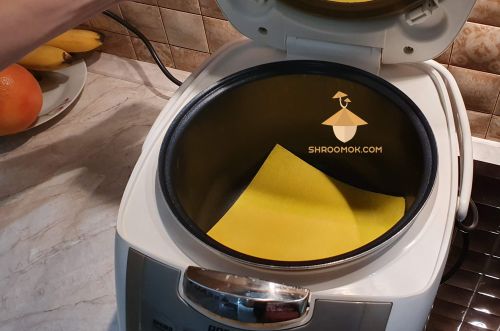
❗️If the jar cracks or breaks during sterilization, you can't use it for further inoculation!
2. Fill the multicooker (or pressure cooker) with water. The level of water should reach half of the jars or a little bit more. Just keep in mind that the water will boil and if you pour more water, the lids will be filled with water. We can't let it happen!
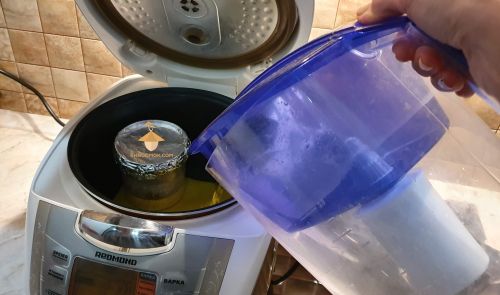
3. Put the jars in pressure cooker (autoclave, multicooker, instant pot).
Heat resistant polypropylene (5PP) jars with grain substrate for terilization in instant pot. Polypropylene jars can float because they lightweight. To prevent them from turning over, you can put a ceramic plate on top and close the lid of multicooker
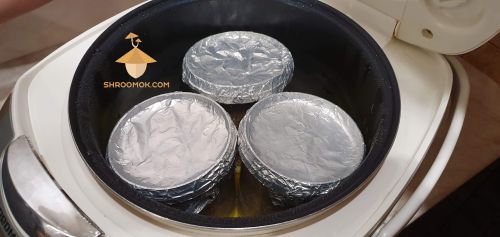
Glass jars with grain substrate for sterilization in pressure cooker
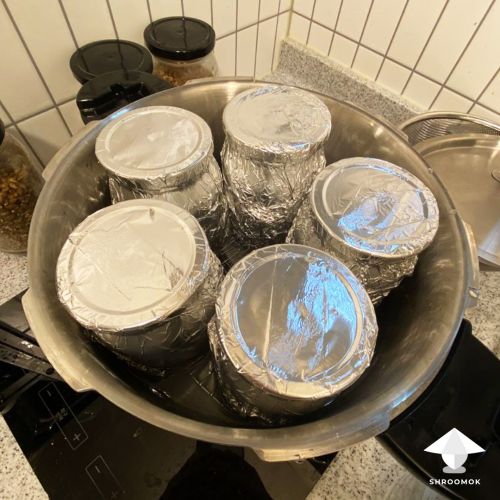
Autoclavable 5PP grow bag with grain substrate for sterilization in pressure cooker
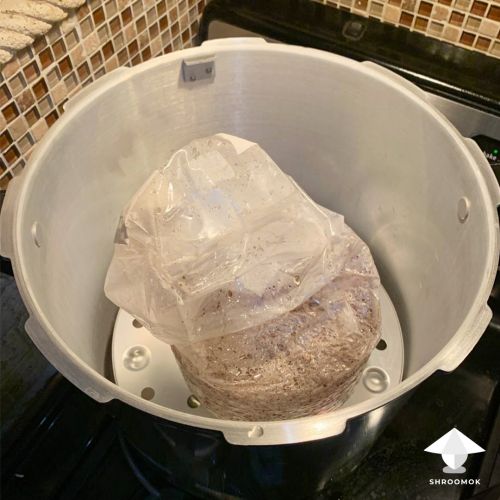
4. Set the temperature 250°F or +121°C or 15 psi for Pressure Cooker and Autoclave.
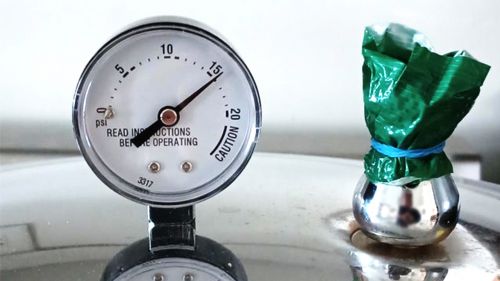
Sterilization time depends on the type of grain
⏰ Wheat berry, oats, barley, rye berry, BRF substrate, brown rice - 1 hour 30 minutes (15 psi)
⏰ Millet - 1 hour 20 minutes (15 psi)
⏰ Corn, popcorn, sorghum - 2 hours (15 psi)
Sterilization duration depends on the pressure and temperature

🔴 Pay attention! The recommended temperature for grain sterilization higher than +100°C or 212°F! It gives more chances to destroy all bacteria and their endospores that still alive in grain 🔴 Sterilization is about bacteria contamination prevention, because mold spores die at 60°C or 140°F and higher during at least 30 minutes. However bacteria can withstand higher temperatures for longer
5. When sterilization is complete leave the substrate cool down slowly for at least 4-8 hours.
❗️Don't open PC, don't take the jars out immediately after sterilization is complete. Why?
⛔️ You can hurt yourself with hot steam.
⛔️ If you open the PC/Autoclave/Multicooker the glass jars can break because of the difference in pressure and temperature. Broken jars go straight to the trash. Polypropylene jars you can take out immediately, but it would be better to let them cool down a little without a sharp temperature changer
⛔️ Cold (not sterile air) come through air filter due to rapid temperature changes and pressure changes. It can provoke contamination in the future
6. When you take the sterile substrate out of the pressure cooker leave it to chill at room temperature. Jars/bags can be warm a little bit. Do NOT remove the foil!
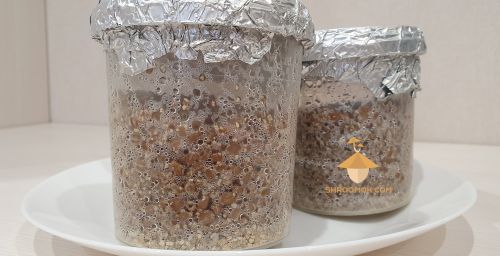

Mild condensation can appear in jars/bags after sterilization. Don't worry, it's okay!
7. Repeat the same steps with the next bunch of jars/bags with grain substrate.
Grain substrate sterilization without a pressure cooker or autoclave
Grain sterilization in pot
Load jars in pot.
Add water (water level should be 1/2 of jars height).
Bring the water to boil. Close the lid.
Make heat treatment for 90-120 minutes.
Take out the jars. Let the grain cool down and wait for 24-48 hours.
Repeat heat treatment for the same jars with substrate for 90-120 minutes again.
Don't open the lid of pot. Let the jars cool down in pot.
Take out the jars. Be sure that jars cool down to room temperature.
Jars ready for inoculation!
How to make grain sterilization in the oven
This method is worst than heat treatment in pot, because grain usually dry out in the oven.
Sterilization in oven can be used for big grains like corn.
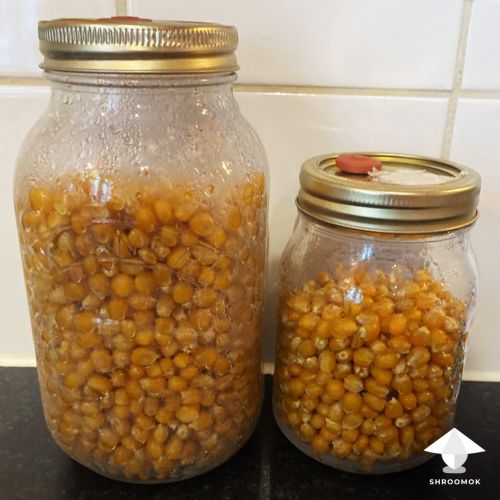
Wheat, rye, oats usually become too dry after oven sterilization
For corn sterilization in oven add 1 table spoon of water in each jar and close the lid. Cover each jar with foil.
Preheat oven at 150°C or 300°F.
Then load the oven with the jars sideways to have thiner water level we added before (extra 1 table spoon of water).
Leave the jars in the oven at 150°C or 300°F for 30 minutes.
After 30 minutes set the temperature 120°C or 250°F and sterilize for another 2 hours.
Turn off the oven, take out the jars. Let them cool till room temperature for about 8 hours.
Jars ready for inoculation!
Tyndalization
One more option if you don't have pressure cooker is Tyndallization. It is old school method and takes 3 days, but it works.
Tyndallization essentially consists of heating the substance to boiling point 100°C or 212°F and holding it there for 15-30 minutes, three days in succession. After each heating, the resting period will allow spores that have survived to germinate into bacterial cells; these cells will be killed by the next day's heating.
If you are going to try tyndallization keep in mind you should start counting time after jar/bag with substrate reach max temperature inside. If you put jar with spawn inside boiling water it will take some time before center of jars reach required temperature. Use at least 30 minutes treatment.
Useful notes for grain sterilization process
✅ Does it possible to sterilize substrate without a pressure cooker (PC)? You can sterilize substrate in the oven. But PC/Autoclave is preferred because sterilization under pressure gives higher temperature in the substrate. Some mushroom growers sterilize jars with substrate just in a saucepan on the stove. This option is suitable for sterilizing secondary substrates (hay, coconut peat soil etc). Grain substrate requires higher sterilization temperatures to deal with bacteria. Therefore, in most cases, sterilization without a pressure cooker/multicooker leads to substrate contamination and all work done before will go to waste.
✅ Make sure that the lids on the jars are tightly closed before and after sterilization. It can happen that metal lids come loose and need to be tightened. If the lid is open at all (this happens with polypropylene lids), then the substrate must either be discarded or sterilized again.
✅ Ready non-sterilized substrate in jars/bags can be stored in the refrigerator for 2-3 days.
✅ Ready sterilized substrate in jars/bags can be stored for 3-7 days before being inoculated.
When all jars/bags cooled down to room temperature move on — STEP 6. Inoculation 🔽


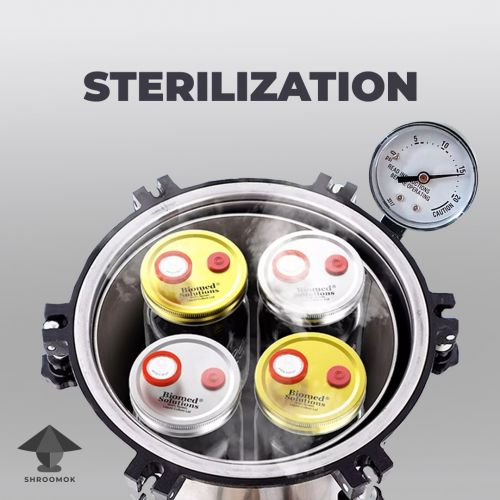
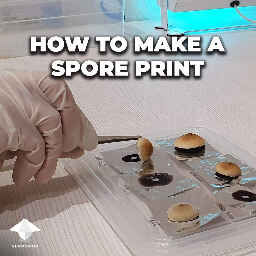
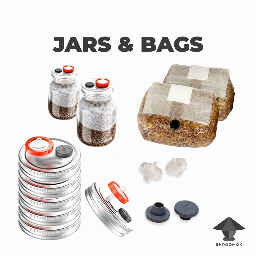
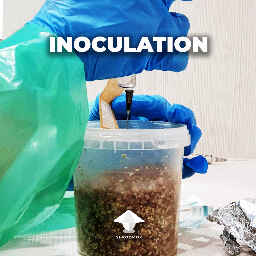
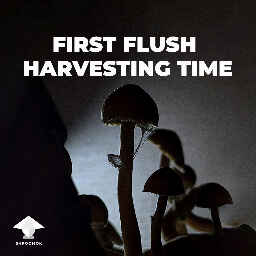
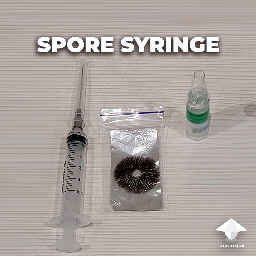
Comments
I followed your instructions closely and used mason jars with lids, filters, and injection port. I properly hydrated and sterilized the rye grain. I had some trouble sterilizing the jars in the pressure cooker and had to start it over a couple of times, and about half of my jars broke during the process. Yes, I had the protector on the bottom of the PC as well. This is my problem. After injecting the spores, I see no growth at all after over a week. I think I may have dried out my grain in the PC. Is there any fix to this problem that you can advise?
@Aaron
1) Try to gain pressure in a PC slower. Be sure jars do not knock against each other during sterilization process. Let the PC cool down before opening.
2) After inoculation with spore syringe it takes 5-15 days for the first signs of mycelium.
3) Dry grain test: when the jar tilted or shaken slightly, the grains crumble and move easily, like in a baby rattle.
What to do in this case? Sometimes adding sterile water with syringe through inoculation port (15-20 ml) can help.
4) One more reason of zero growth is possible contamination. Check the jars for any signs of powdery bright colored mold growth and check the smell through the air filter (or open one of the jars to check the smell) for bacterial contamination (sweet-sour-cider-rotted smell).
Photos of your jars would be helpful in identifying the problem. To get quick feedback/consultation join Discord/Reddit/BuyMeACoffee. Links below (in the footer)
Hi! I used your guide using glas jars with rubber injection ports and air locks. Pc for 1,5 h. Injected with a syringe front a online store. For some reason I got green mold in all 6 jars. That was a really big surprise. Any ideas what went wrong?
Hi @Eric
Most likely, your syringe was contaminated. Also poor sterility routine before/during inoculation process could be the reason in your case.
Add comment